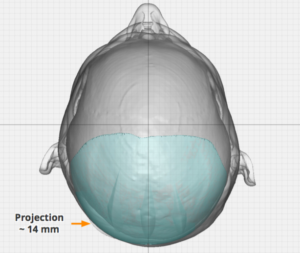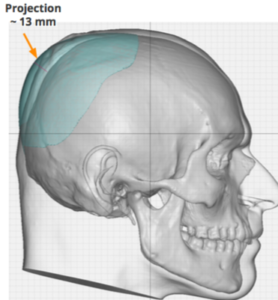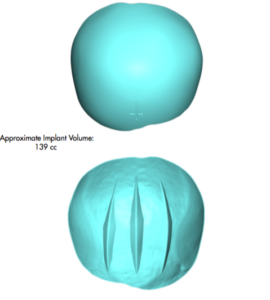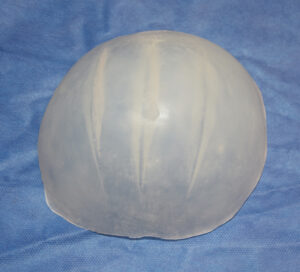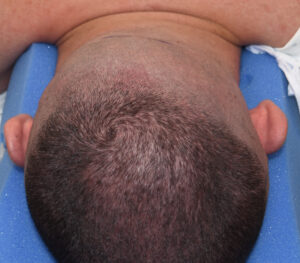Background: The shape of the skull, while having numerous surfaces, is largely composed of varying convex shapes. There is no one spot where the skull is truly flat. Thus when a flat spot appears it is both noticeable and aesthetically undesired. This is particularly on the male head today because of shorter and shaved hairstyles.
The most common flat skull deformity is plagiocephaly. Known as a twisted skull it usually affects the back of the head the most with lesser effects on the forehead. In my experience it occurs equally on both sides of the back of the head. The flattening can be very modest or more significant. The ipsilateral ear is always displaced forward on the affected side and the flatness extends well onto the posterior temporal area.
When correcting a plagiocephalic skull shape some patients will also want to augment the overall back of the head as well. This can be done provided that the stretch of the scalp can accommodate it. This is usually successful if the amount of overall implant augmentation stays under 150ccs in my experience.
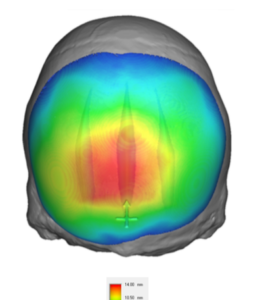
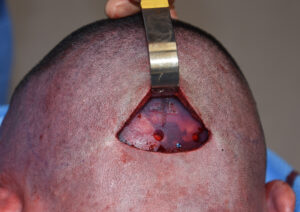
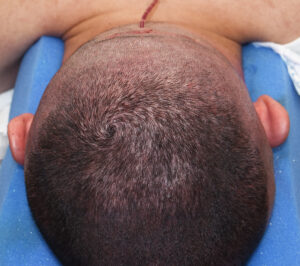
The key in any custom skull implant is its ability to fit with the stretch of the scalp to accommodate it. While scalp flexibility does vary amongst differing gender and ethnicities, as a general rule a skull implant must stay between 100cc to 150cc to fit an have a comfortable incisional closure.
Case Highlights:
1) A flat back of the head on one side (plagiocephaly) is one of the most common aesthetic skull deformities.
2) A custom skull implant is the best approach for treating occipital plagiocephaly as it can see the true scope of the skull deficiency.
3) In correcting an occipital plagiocephaly some see it as an opportunity to augment the overall back of the head as well.
Dr. Barry Eppley
Indianapolis, Indiana



